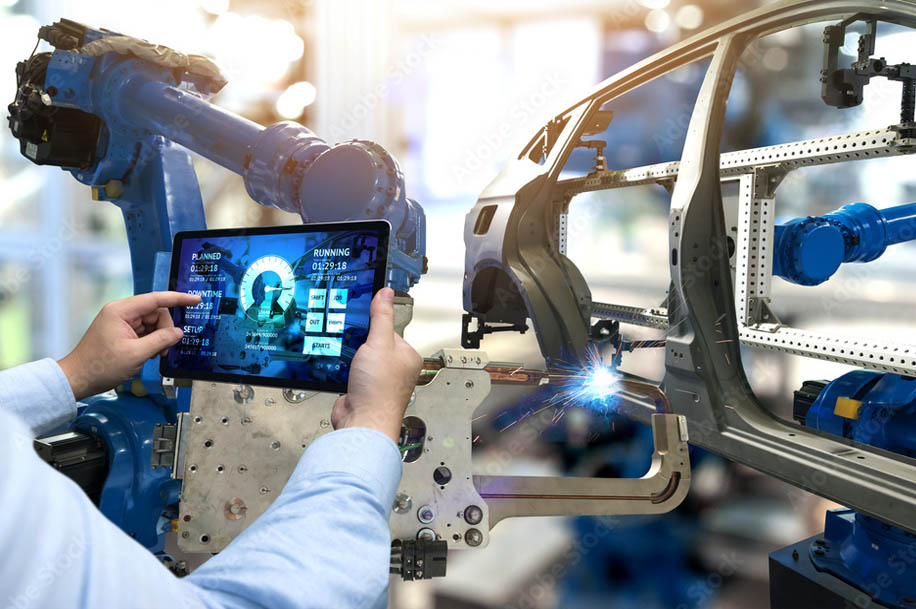Robot and gripper calibration
Introduction
In the world of robotics, Precision and accuracy are Paramount for successful manipulation tasks. One crucial aspect that plays a vital role in achieving optimal performance is robot and gripper calibration. During a long production cycle, tooling output starts varying from the output on which automation was calibrated. Calibration refers to the process of aligning and adjusting the various components of a robotic system to ensure accurate and reliable operation. “Enhancing precision and efficiency of robotic manipulation is dependent on robot and gripper calibration.

Services
Understanding Robot and Gripper Calibration
Robot calibration involves fine-tuning the kinematic parameters and joint angles of the robot to align it with the desired physical workspace. This process ensures that the robot can accurately perform tasks within the specified operational boundaries. Gripper calibration, on the other hand, focuses on adjusting the gripper’s force, position, and control parameters to achieve optimal grasping and manipulation capabilities. Both types of calibration are critical for achieving precise and efficient robotic operations.
The Calibration Process
Initial Configuration Assessment:
The calibration process typically begins with an initial assessment of the robot and gripper configuration. This involves checking for any physical misalignments or inaccuracies that may affect the robot’s performance. It is important to ensure that all the components are properly connected and in proper working order.
Calibration Data Collection:
The next step involves collecting calibration data to understand the system’s behavior and characteristics. This is done using various techniques such as joint angle measurements, end-effector position sensing, force/torque sensing, and vision-based measurement methods. The collected data provides a baseline for identifying the discrepancies and determining the necessary adjustments.
Parameter Optimization:
Using the calibration data, optimization algorithms are applied to determine the correct parameters for the robot and gripper. The parameters are adjusted iteratively until the desired performance is achieved.
Validation and Fine-Tuning:
Once the initial calibration is completed, validation tests are conducted to assess the effectiveness of the adjustments. This involves executing various manipulation tasks and evaluating the performance against predefined metrics. If any discrepancies or errors are detected, further fine-tuning may be required to achieve the desired precision and efficiency.
Benefits of Robot and Gripper Calibration
Enhanced Precision:
Calibration ensures that the robot’s movements and gripper actions are accurate and repeatable. By aligning the physical system with its virtual representation, it minimizes positioning errors and improves the overall precision of the robot. This is crucial for tasks that require intricate manipulations or involve delicate objects.
Improved Efficiency:
Calibrated robots and grippers can perform tasks more efficiently, reducing the time required for completion. By eliminating errors and optimizing control parameters, calibration enables the system to move smoothly and swiftly, resulting in increased productivity and throughput.
Increased Reliability:
Calibration enhances the reliability of robotic manipulation by minimizing the risk of failures and errors. Accurate calibration ensures that the robot and gripper can consistently perform their intended actions, reducing the chances of unintended collisions or damage to the workpiece.
Flexibility and Adaptability:
Calibration allows robots and grippers to adapt to changing operational conditions or task requirements. By adjusting the control parameters, the system can accommodate variations in the objects being manipulated or adapt to different environmental conditions. This flexibility enables seamless integration of robots into diverse applications and enhances their versatility.
Robot and gripper calibration is a critical process in ensuring the precision, efficiency, and reliability of robotic manipulation. By aligning the physical system with its virtual representation and optimizing control parameters, calibration enhances the performance of robots and grippers. It enables accurate and repeatable actions, improves efficiency, increases reliability, and enhances the system’s flexibility. Investing time and effort in proper calibration is essential for unlocking the full potential of robotic systems and achieving optimal results in various industrial and research applications.

